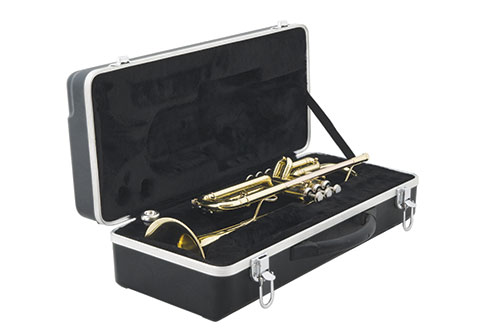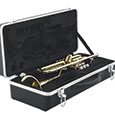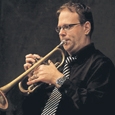Practicing away from the trumpet is not as crazy as one might think. Sometimes the chops just need time to recover from overuse or a hard day of rehearsing or performing. Moreover, a student might need to keep the mouthpiece off the lips because of chapped lips or a lesion that has developed. Either way, there are some fun and inventive ways to make progress while away from the trumpet. Listening, physical exercise, getting out and being social, breathing exercises, singing, and isometric exercises for the chops are good ways to get practice time in without the trumpet.

Listening
Listening, whether at a concert or to a recording, can have a profound effect on a student’s auditory skills as a musician. Musicians should have a certain sound in their heads to replicate when playing. Without this, there is no reference to imitate. Listening to great artists performing on our instrument – or another instrument – helps students define their desired sound. Creating a beautiful, warm sound starts with imitation. Many students often overlook listening in their development. Listening, like languages, is a continuous area of study.
Exercising
Physical exercise is known to decrease stress levels, stabilize moods, lower high blood pressure (for musicians this can help calm nerves), provide energy boosts, and help with sleep, as well as give someone a hobby outside of music. Students can get bogged down with homework and practice, but exercise can give them an outlet to clear their minds, rejuvenate their bodies, and give them a clean slate mentally and physically for when they start their study and practice routines again.
Networking
Practicing is almost always a solo event. It can be lonely, but it does not have to be. Remind students to be social with those around them. Knocking on the practice room door next to them and meeting someone new or saying hi to a friend can be a refreshing and pleasing break, and it also builds networks of musical friends to call upon for playing duets or a quick listen and critique.
Breathing
Breathing exercises are a great way to develop breath power and control. The air does all the work for wind instruments. Being able to control this air in many different ways gives a trumpet player a huge advantage over those who cannot. For example, being able to control crescendos and decrescendos, velocity of air, and air pressure for high and low notes all contribute to the correct amount of lip vibration needed to create the perfect characteristic of a desired note. Many different breathing exercises are available from many different sources. My favorite recommended books about breathing and contains different exercises would be The Breathing Book for Trumpet by David Vining (Mountain Peak Music, 2009) and The Breathing Gym Daily Workouts by Sam Pilafian and Patrick Sheridan (Focus on Music, 2002).
Singing
Singing is one of the most difficult concepts for instrumentalists to remember to practice. Players often use their instruments as a note-finding crutch. If they cannot sing the pitch of a note that follows one they just played, they are relying on the instrument to get the first pitch and are most likely guessing at the following second pitch. Today’s instruments are built well and come from the factory mostly in tune, but few students move past the mindset that as long as the fingering is correct, the right note will sound.
This cannot be further from the truth. Students and professionals alike must use their ear training skills to adjust the instrument’s pitch to exactly where it should be, and to develop the ear to this point takes serious patience and a good amount of time each day practicing singing pitches and solfege. Have students sing anything and everything. The better the student can sing and hear their notes, the more accurate and confident they will be in their performance execution.
Embouchure Building
Isometric exercises for your embouchure and facial muscles are a great way to stay in shape and build endurance while away from the instrument. These exercises are fantastic because they strengthen the muscles without the mouthpiece on the embouchure causing excess pressure or stress.
The pencil exercise requires an unsharpened wood pencil. Form the embouchure and place the pencil into its aperture. Maintain the lips around the pencil and then let go of the pencil so it is only held parallel to the ground by the muscles of the embouchure. As the muscles start to fatigue, a burning sensation will set in. At this point, continue until total muscle breakdown. This technique should be used no longer than five minutes a day, every other day, as it fatigues the embouchure.
Say mm, and then hold the embouchure in this position. This is the lip position used when first learning to play the trumpet.
Put the lips into a pucker position and then draw the corners of the mouth back into a smile position. Repeat this pattern.
Conclusion
Often a great amount of progress can be made away from the trumpet, and there comes a point in each persons’ practice life that time away from the instrument is healthy in one or more aspects. Use this time to be smart and creative and to build musical strength away from the instrument. When the instrument is later added back in, this added musical agility gained away from the instrument will launch a stronger, smarter, more well-rounded musician.






